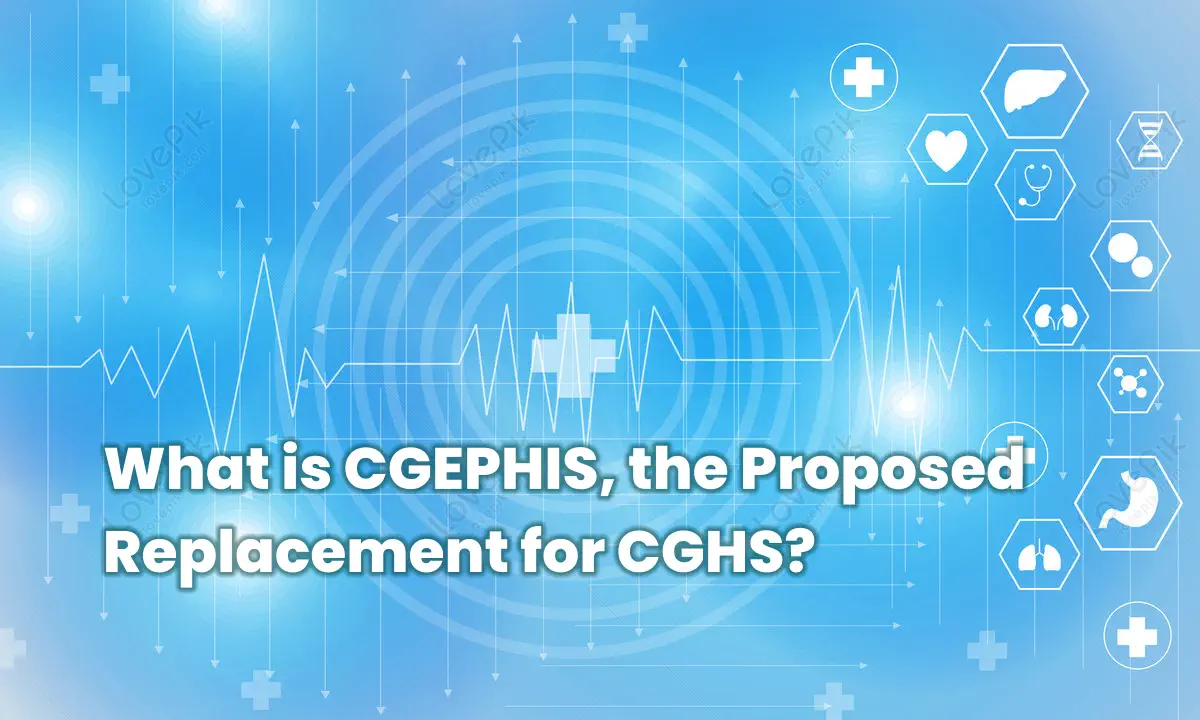Explainer: What is CGEPHIS, the Proposed Replacement for CGHS?

Lately, there’s been a lot of talk about a new healthcare scheme that might replace the Central Government Health Scheme (CGHS), a long-standing system serving government employees and pensioners. This proposed scheme, known as the Central Government Employees and Pensioners Health Insurance Scheme (CGEPHIS), has generated curiosity and questions. What is CGEPHIS? Why is it in the news now? And why hasn’t the government confirmed it? Let’s dive into the details in this easy-to-follow explainer.
Understanding CGHS and Its Challenges
To grasp why CGEPHIS is being discussed, let’s first look at the system it aims to replace. Launched in 1954, the CGHS provides healthcare to central government employees, pensioners, and their families. It offers services like doctor consultations, medicines, and hospital care through government-run wellness centers and a network of private hospitals. Around 42 lakh people across 80 Indian cities depend on CGHS.
But CGHS isn’t perfect. It’s mostly available in big cities, leaving employees and pensioners in smaller towns or rural areas with limited options. The process to get bills reimbursed can be slow and frustrating. Plus, the number of hospitals tied to CGHS hasn’t kept up with the growing needs of its users. The 6th and 7th Pay Commissions, which review government salaries and benefits, flagged these issues and suggested shifting to an insurance-based healthcare model for better coverage and fairness.
This is where CGEPHIS enters the picture.
What is CGEPHIS?
The Central Government Employees and Pensioners Health Insurance Scheme (CGEPHIS) is a proposed healthcare plan that would replace CGHS with an insurance-based system. Unlike CGHS, which relies on government facilities and select private hospitals, CGEPHIS would be run by private insurance companies registered with the Insurance Regulatory and Development Authority of India (IRDAI).
The goal? To make healthcare more accessible, efficient, and tech-savvy. Based on media reports, CGEPHIS would likely use tools like smart cards and mobile apps to simplify things like hospital visits, cashless payments, and booking appointments. It’s also expected to work with a much larger network of hospitals, including those in areas where CGHS isn’t available, so beneficiaries can get care closer to where they live.
Key Features of CGEPHIS
While the government hasn’t shared an official plan for CGEPHIS, reports and expert insights give us a sense of what it might offer. Here are the likely features:
- Cashless Healthcare: Beneficiaries would get smart cards with their personal and medical details. These cards would let them get treatment at empanelled hospitals without paying upfront, making the process smoother than CGHS’s reimbursement system.
- Bigger Hospital Network: CGEPHIS aims to partner with more hospitals, both public and private, across India. This would help people in smaller towns and rural areas, unlike CGHS, which is mostly urban-focused.
- Broad Coverage: The scheme would likely cover hospital stays, pre-existing illnesses, and possibly long-term conditions right from the start. This is a step up from CGHS, which has some restrictions on treatments.
- Mandatory for Newcomers: Reports suggest CGEPHIS would be required for new government employees and retirees after it’s rolled out. Current employees and pensioners might choose to stay with CGHS or switch to CGEPHIS.
- Tech-Friendly: Beneficiaries could use a mobile app or website to book appointments, check claims, and manage their healthcare, bringing the system into the digital age.
- Faster Claims: With IRDAI-registered insurance companies involved, CGEPHIS would aim to process claims quickly and transparently, addressing complaints about CGHS’s delays.
These features suggest a modern, user-friendly system, but here’s the catch: none of this is officially confirmed by the government.
Why Is CGEPHIS in the Spotlight Now?
Talk about CGEPHIS has been heating up recently. Here’s why:
- Pay Commission Push: The 6th Pay Commission (2006) and 7th Pay Commission (2014) both recommended moving away from CGHS to an insurance-based system. Now, with the 8th Pay Commission expected to start shaping policies soon, possibly by early 2026, many think CGEPHIS could be a key reform. Discussions about the new commission’s focus have brought CGEPHIS back into the conversation.
- Need for Better Healthcare: Government employees and pensioners have long complained about CGHS’s limitations, like its urban bias and slow processes. With healthcare costs climbing, there’s growing demand for a system that offers wider access and better care.
- Media Buzz: News outlets and policy experts, citing unnamed sources in the Ministry of Health and Family Welfare or the Department of Personnel and Training (DoPT), have been exploring CGEPHIS’s potential. While these reports aren’t verified, they’ve sparked public interest.
- Lessons from the Pandemic: The COVID-19 crisis highlighted gaps in healthcare, even for government workers. This has pushed policymakers to consider modern, insurance-driven systems that can handle big health challenges.
Still, the government hasn’t said a word officially. The Ministry of Health and DoPT have stayed silent, and some experts believe CGEPHIS is still being planned, with details yet to be finalized.
Why No Official Word Yet?
Why the silence on CGEPHIS? Switching from CGHS to an insurance-based system is a huge task. It means working with insurance companies, signing up thousands of hospitals, and ensuring a smooth transition for millions of people. The government might be taking its time to get it right.
Cost is another factor. CGHS is fully funded by the government, but CGEPHIS might involve premiums, even if partly covered. Figuring out who pays—employees, pensioners, or the government—could be tricky. Some CGHS users might also push back if they prefer the current system.
Finally, the government might be waiting for the 8th Pay Commission to kick off its work. Since pay commissions overhaul salaries, pensions, and benefits, CGEPHIS could be part of a larger package of changes, with planning still in early stages.
What Does This Mean for You?
If you’re a CGHS beneficiary, nothing changes for now. CGHS is still the go-to healthcare system for central government employees and pensioners. If CGEPHIS becomes real, it could offer more options and better access to care. But until the government makes an announcement, it’s all just talk.
Keep an eye on updates from the Ministry of Health or DoPT. You might hear more as the 8th Pay Commission gets closer to shaping new policies, likely in 2026. For now, CGHS is business as usual, so there’s no need to worry about immediate shifts.
Wrapping Up
CGEPHIS holds promise as a modern replacement for CGHS, with features like cashless treatment, a bigger hospital network, and digital tools that could fix many of CGHS’s flaws. But without an official nod from the government, it’s still just a possibility, not a done deal.
As the 8th Pay Commission looms, we might get clearer answers about CGEPHIS. For now, it’s a sign that healthcare reforms are being considered, even if they’re not here yet. Stay informed, and don’t get swept up by every rumor until the government speaks up.




